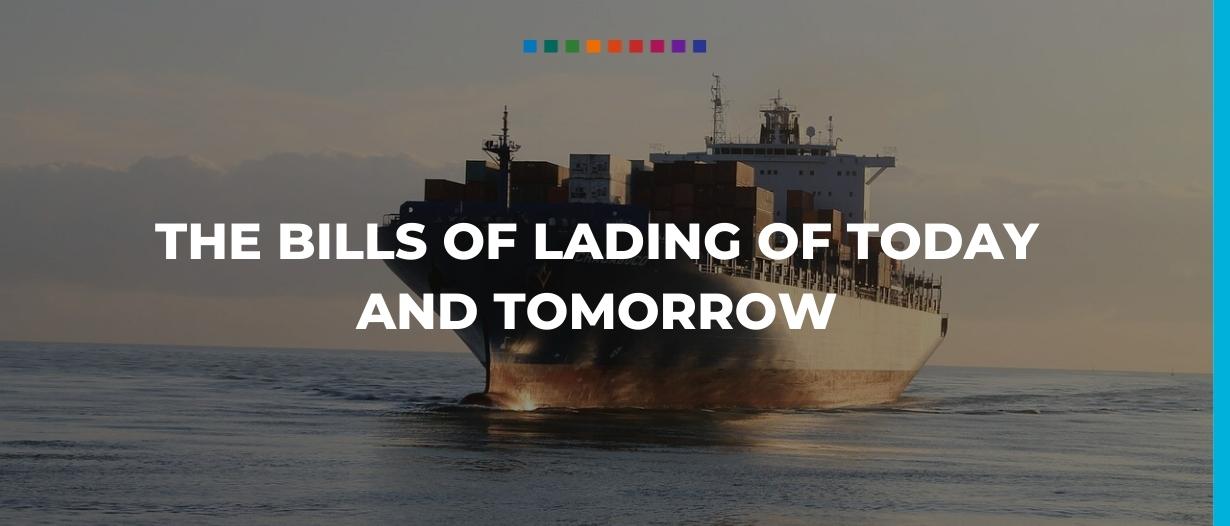The ecosystem of cross border trade can be a complex one, and a level of assurance is needed to ensure proper levels of trade can be reached as efficiently as possible. A Bill of Lading, sometimes shortened to B/L acts as such assurance, as when issued by a carrier of goods it presents acknowledgement of the receipt of the cargo for shipment.
As the need for an acknowledgement of the receipt of goods for shipping is ubiquitous to all methods of transport (air, sea, rail and land) there are different variations of said Bills that are tailored to each method of transport.
Bills of Lading are legal documents, which contain limited details specific to the transaction of goods such as quantity, type of packaging, weight and a short description of the goods.
Because of the details contained and credibility of the document, the Bills must be shipped with the goods irrespective of transport method and, depending on the type of B/L will contain a combination of three signatures – shipper, carrier and buyer.

The above details that are contained within a Bill of Lading result in the document being a crucial part of the shipment’s processing. In order to process a shipment correctly and efficiently, the parties involved can look to one document to see details such as the type of good and quantity, but also have a universally recognised and applied method of receipt.
Furthermore, the increase in digitisation in the global trading industry has lead many toward the use of Electronic Bills of Lading – such as Cargodocs eB/Ls, used by a reported 6,000+ companies across 76 countries – and in some cases even Blockchain based – more on this to come.
Respective Bills to different Transport methods
As stated above, different modes of transport require different specifications as to what the actual document entails and how it is handled. Before we step into which transport methods require which type of bill, there are some technical definitions to understand;
Negotiable vs. Non- negotiable
A negotiable Bill of Lading is a documental instruction which directs delivery of the goods toward the person in possession of the original copy of the bill which is representative of the ownership of the goods.
To be more specific, the party which is set to receive the goods post purchase must be able to present the original bill of lading at the destination port in order to collect said goods – if there is no bill to present the goods will not be unloaded. With this structure, the Bill and thus ownership of the goods can technically be reallocated to someone other than the buyer, who would be able to present the document and receive the cargo.
In contrast to this, is non-negotiable bills of lading. In this arrangement, the Bill of Lading contains a specific name/consignee that will receive the goods, and no one but the designated consignee should receive ownership of them.

Ocean Transport
Straight Bill of Lading: A common B/L for oceanic transport, this non-negotiable bill is addressed directly to a specific consignee (the buyer) and, traditionally included the customs broker also listed on the document as a notify party. However, with the capabilities of electronic tracking capabilities it is often unnecessary.
With straight bills, the carrier will produce three sets of one bill. At each stage, the correct corresponding bill of lading must be produced.
Order Bill of Lading: Rather than being addressed directly toward the buyer, Order Bills of lading are directed toward the order of the shipper. This is therefore a negotiable bill, which once indorsed in blank by the shipper, any genuine holder of the B/L can collect the goods.
Express Bill of Lading: More often than not used in scenarios in which the buyer has already paid for the goods, an express bill of lading is a non-negotiable bill with instructions for goods to be released to the named consignee or notify party only. The key difference with an express is that there is no original copies of the Bill printed, and actually no need for a physic paper bill to hand.
There is no need for a bill of lading to be issued, because generally the shipper will not need to hold onto the original bill for the payment of the cargo.
House Bill of Lading: Created by an Ocean Transport Intermediary (OTI) – otherwise known as Freight forwarders or NVOCCs – this acknowledgement of receipt is issued to the shipper upon the forwarder’s receipt of his B/L. Much like other bills, this document entails details regarding the transaction, buyer and freight forwarder.
Electronic Bill: In previous times, telex was often used to contact the party at the goods destination stating that goods were ok to be released. Nowadays however, much of this is done electronically and sometimes automatically. This is sometimes done through emails, but may be done through an integrated electronic system.
The electronic, or Telex lading method is in contrast to the above express bill of lading in that it is more frequently used when the buyer still owes part or all of the money for the purchasing, but pays before arrival of the goods.

Air Transport
AWB – Air waybills of lading are issued for the transport of cargo through planes, and are non-negotiable in nature. Upon landing at the airport, the pilot will immediately present either the buyer/ consignee or the notifying party with the AWB which essentially only asks as a contact for carriage.

Land Transport
Firstly, something called a WayBill is popularly used in the US for land cargo transportation. With similarities to the above AWB, WayBills are non-negotiable and should always be addressed to the consignee of the goods.
In contrast to WayBill’s, goods transport via land can be facilitated through the use of a Uniform Bill of Lading. The uniform bill is negotiable, and can be consigned to order.
To Order Bills
Any goods that have not been paid for in advance, and are therefore shipped under the pretence “to order” can be divided into two categories;
- To Order, Blank Endorsed: Previously we mentioned that the endorsement of a bank in a bill of lading can often be the deciding factor in whether or not the goods are given the okay to be released.
Because the bill is made to order, and therefore a negotiable bill of lading the consignor must sign and endorse the bill of lading so that it’s title and ownership can be transferred.
- To Order, Blank: With this trading document, the goods are first entrusted to a bank with the intended final owners of the goods listed under ‘notifying party’. Upon receipt, the named bank will then endorse the bill to the intended party (notify) against the payment of any accompanying bills.
Master Bills of Lading
All of the above variations of bills of lading are able to be listed within a master bill, in scenarios which include a shipment of many different goods. Say for example, a shipment is carrying over 1,000 different types of goods, for different buyers and from different sellers.
This master document is called so because it includes the contents of the shipment, including the corresponding bill of lading reference numbers (and a short description of the goods to go with them).
The Future of Bills of Lading
With the more traditional paper method of bills of lading, there were multiple issues ran into such as time delays, additional costs and a higher chance of human error. With the current digitisation of global trading markets, Bills of lading have also been brought into the 21st century with the Electronic Bill or E-B/L.
Almost identical to the paper bill, the E-bill must include all the same transaction-specific details within it, and must carry out the main responsibilities of a paper bill – legally accepted form of acceptance of receipt, contract of carriage and a legal document.
If one is to envisage the trading process, it is not difficult to see the advantages of electronic bills of lading. Time saved would be the first argument in favour, as the electronic bill can be transferred instantly to anywhere in the world.
Furthermore, from a logistical viewpoint the cost associated with the transportation and facilitation of the paper bills of lading would significantly add up If a company were to be users of the bills regularly enough. Also, if for any reason the contents of the bill were to be amended (updated trading agreement such as quantity/ type etc) then this is done far more efficiently electronically, and can also be redistributed to participating parties far quicker.

Blockchain Bills
CargoX plans to revolutionise the way in which traders and freight forwarders communicate and acknowledge receipt. As of the 7th May, CargoX has reportedly issued just shy of 1,000 smart bills of lading, and it is easy to see why.
The current process of transferring bills of lading may take as long as 7-10 days, which may not sound like long but any efficient reduction in time in business is always a good thing, but just how much of a reduction can blockchain make? CargoX are claiming the process can be completed with 20 seconds of certain trading conditions being met.
Substantial time savings are not the only benefit on the table with Blockchain based Bills of Lading. They are also arguably more secure, as there is no central storage of the bills so sensitive information contained within the document is less likely to be leaked/ hacked.
Actual monetary cost is another argument CargoX have put forward for the adoption of smart bills. They estimate the cost of sending three copies of the same bill of lading to average out at around $100, which if you consider the possibility some shipments requiring multiple bills along with regular trade, this then becomes an expensive process.
Lastly, the environmentally friendly aspect of a paperless process is one most could get on board with today with the specific focus on climate change.
Between the monetary, moral and logistical advantages of using smart bills of lading it is no surprise that many are adopting the method. CargoX has already partnered with over 15 freight forwarding and logistics companies, and are set to continue their expansion. This may result in a vastly different trading landscape over the course of the next few years.
Blockchain’s integration into the global business community is no ordinary industry introduction, and has proven to significantly reduce many risks and barriers faced by traders and financiers. Perhaps CargoX’s application to bills of lading will continue the trend.























